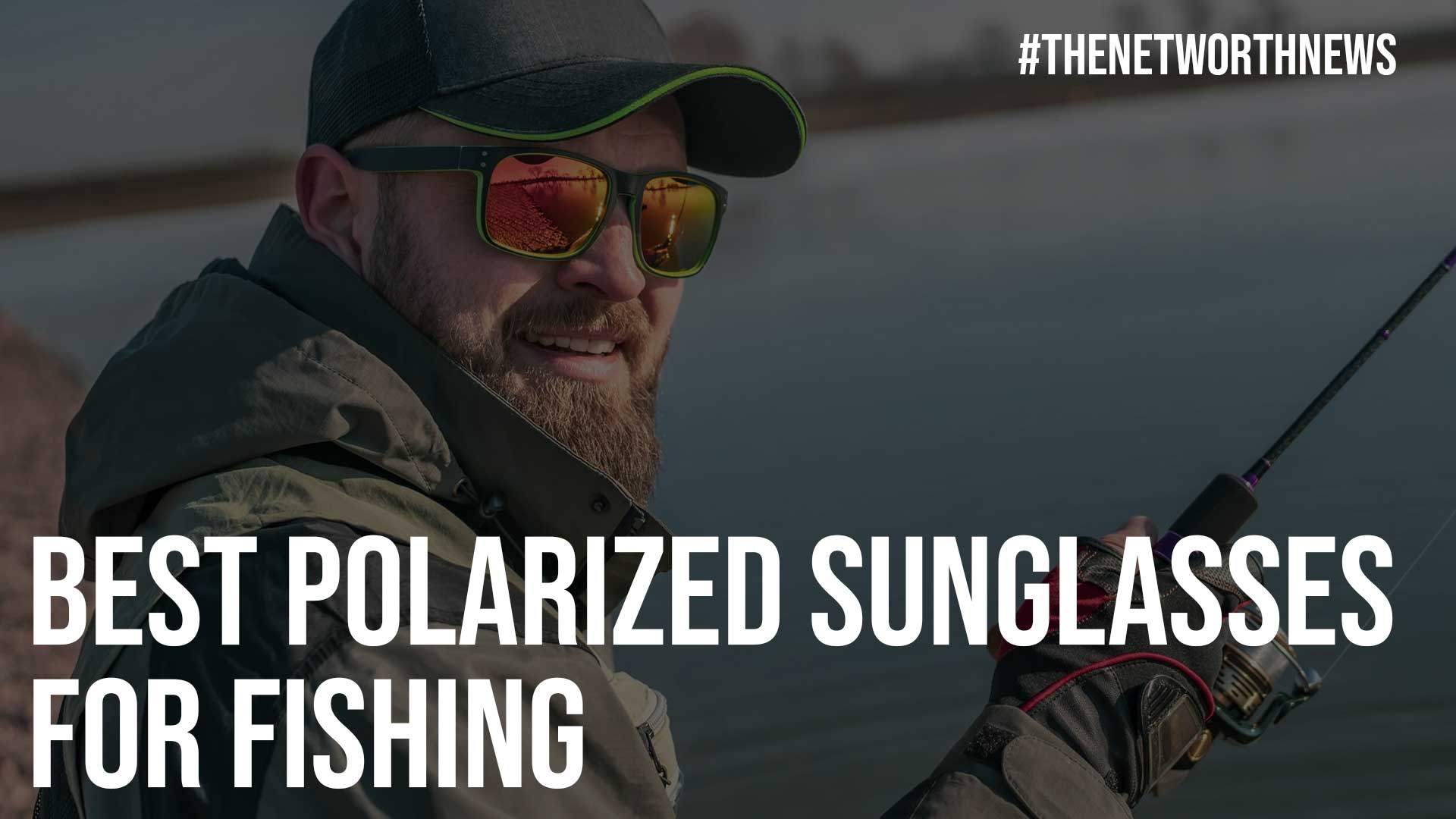Sunglasses are vital for all outdoor activities, but for fishing in clear and waters, you really need glare-reducing polarized sunglasses.
Depending on the kind of fishing you like to do, you can make do with a poor rod or reel, but if you can’t see the fish in these environments, you are not going to succeed.
The best-polarized sunglasses for fishing cut through the surface glare and give you a clear view of the water column and the fish swimming it, so you can put your lure or fly right in front of them and get them to eat it.
When we fish in many environments – freestone rivers and lakes for trout and flats fishing for permit and bonefish – they are the single most important piece of equipment for the trip.

How do polarized sunglasses work?
Kind of like a hanging blind, polarized lenses use a vertical filter to filter out light waves that are horizontal in nature, as most glare reflecting off surfaces such as snow, ice, and water tends to be.
This cuts out most glare, saves your eyes, and allows you to see beneath the surface of water bodies.
Check this article for a more detailed explanation. If you aren’t into hardcore science, you can skip this bit and rest assured that they are very effective.
Also Read: How To Select The Best Goggle For You?
How to tell if sunglasses are polarized?
There are three simple ways to do this:
- Look at a highly reflective surface in bright light while wearing the glasses and tilt your head to the side and back – if the level of glare varies as you tilt through 60 degrees, then the lenses are polarized.
- Hold the sunglasses in your hand in front of a computer screen. Twist them 60 degrees to either side and if the lenses get darker, they are polarized.
- If you have another pair of sunglasses that you know are polarized, place them in front of the other pair and twist the mystery pair through 60 degrees – if the overlapping lenses turn dark they are polarized.
What is VLT?
The most important concept to understand the performance of sunglasses in varying light conditions is their VLT rating. VLT stands for Visible Light Transmission.
The higher the percentage the more light the lens is letting through, or the less it is filtering out.
For high-glare environments such as saltwater, a low VLT is better, whereas for stream fishing in wooded environments a higher VLT helps you to pick fish in lower light conditions.
Can you get polarized prescription fishing sunglasses?
Yes, all of the brands here sell prescription models. Depending on your prescription, the choice of lens materials and/or frames may be restricted, but you can still get something comfortable and effective.
Most manufacturers also make bifocal and progressive multifocal lenses too!
What are some leading brands of polarized sunglasses?
Please check here for our detailed buyers guide to the best-polarized sunglasses for fishing, but we’ve summarised the key brands for you below.
Costa Del Mar
With advanced lens technology, mirrored coatings, and a salt-water pedigree, the Costa del Mar range is a great choice for offshore and salt-water fishing with different models available in either glass or polycarbonate depending on preference.
Costas have been making fishing orientated polarized glasses for more than 35 years and have a great reputation.
Their current flagship technology is the 580 lens, which offers great clarity, absorbs harmful high-energy blue light, and filters out the harsh yellow for enhanced color.
Costa’s are also available in prescription models for those needing corrective vision and some of the popular frame choices for fishing include the Blackfin, Tuna Alley, Fantail, Diego, Reefton, and Cat Cay, models.
Maui Jim
Maui Jim has been around in the industry since 1980 and has a great reputation for durable and effective polarized sunglasses.
They have also innovated heavily in lens materials with five separate materials available to choose from each fulfilling particular applications. Popular frame choices include the Peahi, Big wave, Southern Cross and Makoa Models.
Smith
Smith has a great reputation and has been making polarized lens technology for a long time with the fishing market well and truly in mind.
Smith offers its Chromapop polymer lenses and its Techlite glass lenses as well as their Polarchromic lenses, which vary in terms of VLT (the amount of light they let through) according to the brightness, which is very handy for fishing.
Smith’s Low Light Ignitor glasses are great for maximizing the visibility in gloomy conditions and low light.
Smith’s lenses are also available in prescription and some of the better frame choices for fishing include the Outback, Lowdown, Guides Choice, and Highwater models.
Oakley
Oakley has a good pedigree in skiing and cycling and other sports and now has a decent range of polarized fishing glasses. Oakley’s glasses are also available in prescription options.
As befits a company with a heritage in cycling and other sports where toughness is critical, Oakley boasts some good frame technology.
Oakley Prizm lenses help to filter out the bad light that washes out or hinders vision, and amps up the good light to improve contrast and decrease eye fatigue.
Oakley also offers transitions technology that changes the lens’ VLT in line with ambient light conditions.
There are some great frame choices for fishing including the Fuel Cell, Gascan, Split Shot, and Turbine models.
Also Read: 10 Accessories That Should Be Part of Your Daily Life
Are there any disadvantages to polarised sunglasses?
The only one I find is that they do make it difficult to read a fish finder screen when you are out in the water or other LCD display.
It is easy enough to take them off to read your sonar or check your emails, unless – like me – you have prescription polarized glasses in which case you’ve just got to put up with or take them off and squint a bit!